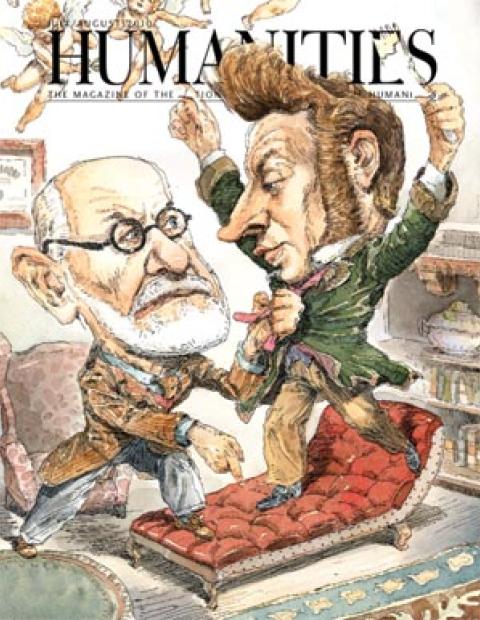Shakers were New Age before New Age was cool. They lived in communes, worshipped a dual-gendered God, and practiced celibacy. They believed that the Christ-spirit dwelled in everyone and preached peace in the middle of a popular war. And they still do.
“I sometimes think museum operators want us to be in the past. . . . But we are a Shaker community. We do not want to become just a museum,” says Sister Frances Carr, one of only three remaining members of the Shaker village at Sabbathday Lake, located on 1,700 acres outside of New Gloucester, Maine.
Her story is told as part of Chosen Faith, Chosen Land, a new book by journalist Jeannine Lauber, who happened upon the community fifteen years ago when she was working as a broadcaster in Portland. Like many, Lauber was surprised to find that there still are Shakers, since an earlier documentary by Ken Burns mistakenly implied that the last four elderly Shakers were living out their final years at Canterbury Shaker Village in New Hampshire. What she discovered at Sabbathday Lake is a tiny, but vibrant, group of believers whose tenets reach far beyond the walls of their simple meeting house.
“We are the people who turn the world upside down,” said Ann Lee, the young female evangelist who in 1774 brought eight followers from England to establish the Shaker faith in America on the eve of the Revolution. As pacifists and professors of human equality, the Shakers suffered persecution. In 1784, Lee was kidnapped, imprisoned, and beaten so badly that she died within months from a fractured skull. Still the Shakers’ numbers grew. At the religion’s zenith just before the Civil War, there were approximately seven thousand believers living in two dozen communal villages, including one of the smallest and poorest communities, founded in 1794 at Sabbathday Lake, named Chosen Land. Now, it is the only one left.
The remaining Shakers still live in the communal ideal, but some of their customs have evolved. The men and women dine and socialize together instead of separately. They also have television, Internet, a website, tractors, and a state-of-the-art research library. The faith has changed, too. For instance, modern followers do not believe that Mother Ann Lee was the second coming of Christ, an idea that circulated among the early believers. Change itself is a core of the faith. “The beauty of Shakerism is that we believe God continually speaks to us and imparts a greater amount of wisdom to us, as we are able to understand it,” says Brother Wayne Smith in Chosen Faith. “Shakerism allows for exploration of other things, opinions, and ideas.”
One of the ways the faith demands exploration is through the “laboring” part of its service. After the readings and the singing (there are an estimated 10,000 Shaker hymns, including the most famous “Simple Gifts”), participants then give personal testimonies. Explains Lauber, “There is no leader, per se. A stranger can come in and testify about something with the same authority that a regular Shaker can.”
Because their Sunday Meetings are open to all, during the summer months the congregation can swell to nearly a hundred. “Shakers are taught to regard every person without discrimination because it might be the Christ,” says Carr. “We have a friend who is an Orthodox Jew who comes every single year. He leaves New York city at three o’clock in the morning in order to be here in time for service.”
People find different paths to Chosen Land. Carr became a Shaker in the more traditional way—she came to the community in the 1930s as a child, when her parents were unable to care for her and her siblings. At twenty-one, she decided to stay. Smith, on the other hand, became intrigued by the Shaker faith in his teens, departing from his strictly defined Baptist upbringing. After more than twenty years at Chosen Land, Smith left the community when Lauber was finishing her book, deciding that the Shaker life asked him to give up too much. And here is the crux of the problem. How does the faith survive when Shakers don’t proselytize, procreate, or live fully in the world?
“The Shakers believe their work is done,” says Lauber. “The faith will go on. It is going on and growing and experiencing a global revival through the postmodern, or emerging Christian church,” loosely defined as a grassroots movement that explores God through spiritual paths instead of creed-based theology. “It already has at its core some of the most important things that the Shakers believe are important—pacifism, the spirit of Christ within us all. What strikes me, is how very progressive America’s oldest religion is. It is not at all in any way, shape, or form, dusty at Sabbathday Lake.”


